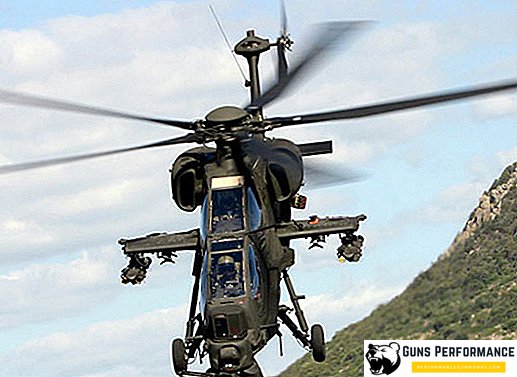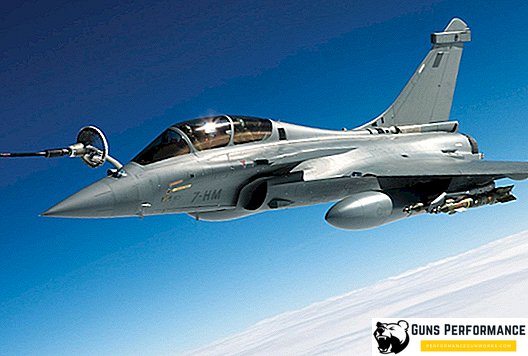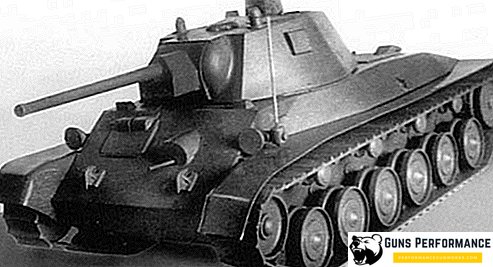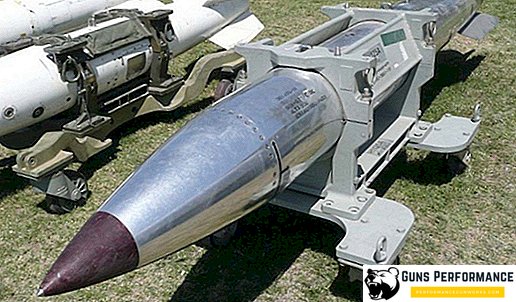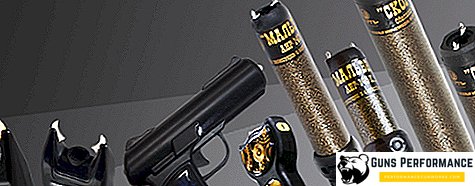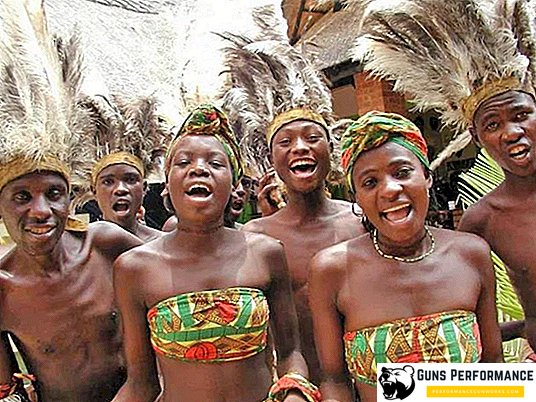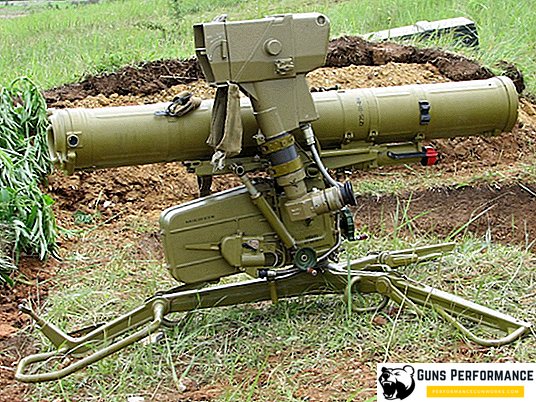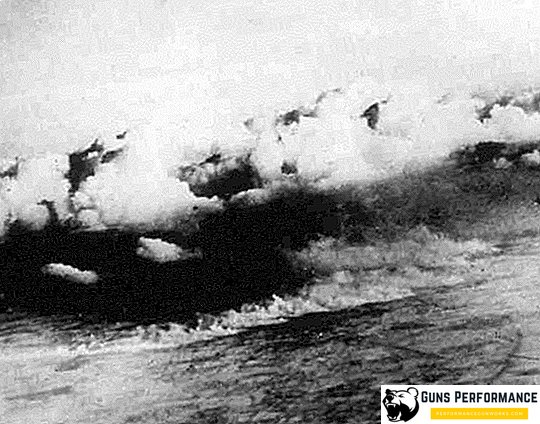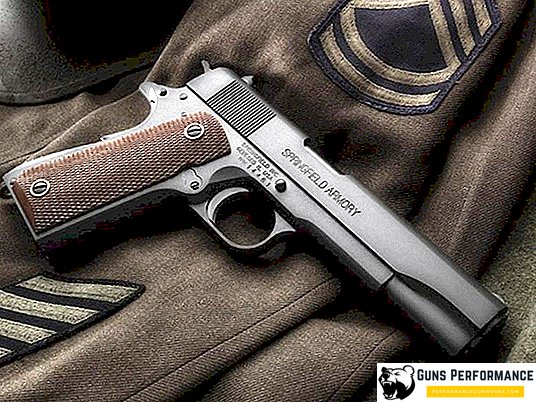
Among the huge number of samples of short-barreled weapons, created in the XX century, the American self-loading pistol Colt M1911 occupies a special place. This gun is the object of honoring several generations of Americans. Developed as early as the beginning of the twentieth century, the Colt passed along with the American army two world wars and all other armed conflicts for which the last century was rich. And if in America there really is a cult of firearms, then it has its own idol and its name is "Colt."
This gun entered the service in the US Army in 1911 and was on it until 1985, the US Army soldier is allowed to use it today. Over the years, the Colt M1911 was (and is) in service with armies and special services around the world. The Soviet Union received these Lend-Lease guns during the war years.
For all the years of operation, the design of this gun only once underwent a major modernization. Currently, more than ten models are known Colt M1911. There are also numerous copies and clones of the "Colt", which were produced in different periods in different countries. In total, more than three million units of these weapons were manufactured. There is also a traumatic model "Colt".

History of creation
At the beginning of the last century, automatic pistols were already quite common in Europe, however, most of them automatic equipment worked by locking the barrel bore free gate, usually this weapon used low-power ammunition.
After the end of the colonial war with the Philippines, the US military came to the conclusion that the .38 caliber revolver was too small; the army needed a 45 caliber weapon. The military insisted on an automatic pistol that was significantly superior to the revolver in accuracy and rate of fire.
This was learned by John Moses Browning, who was at that very moment engaged in the development of an automatic pistol chambered for .38 caliber. He quickly reworked it for a new caliber and offered it to the US military. The pistol used the .45 ACP cartridges, which were developed in 1904 for the Colt Model 1905, with the participation of the Browning itself. This cartridge had good energy performance and high initial bullet speed.
A few words should be said about Browning itself. Without exaggeration, he can be called one of the greatest weapon designers of the new time, a gunsmith from God. The first rifle, John designed in 14 years. Later he created machine-guns, rifles and pistols with equal success. Some of them were refined by other designers and have been in service for many decades. Some Browning products are still in service with the American army.

The first samples of the new pistol were made at the Colt company’s weapons factory, so the weapon was called the Colt-Browning M1911. In addition to Colt, Savage's gun also took part in the competition, but the Browning product turned out to be more reliable: eleven delays versus more than thirty from a competitor.
In 1911, the Colt pistol was adopted by the American army under the name Model 1911.
Initially, weapons were made only at the Colt plant, but after the outbreak of World War I, the situation changed: it took a lot more pistols to carry out military operations than the company could provide. Therefore, orders began to be placed in other factories. Most pistols were manufactured at Springfield and Remington production facilities.
Pistol has proven itself during the fighting in Europe. The powerful “Colt” cartridge had an excellent stopping power, allowing to decide the outcome of a collision with a single shot.
Although, the Colt M1911 had some drawbacks: it had a considerable weight, had an impressive return, a relatively small target range (up to 25 meters), the automation of this weapon was sensitive to contamination. However, these shortcomings were inherent in almost all the pistols of the time. Initially, the "Colt" was used only in the American army, the US police believed this gun is too powerful. Also, the disadvantages of this gun sometimes include USM single action.

In 1926, the pistol was upgraded. Although, the changes may not seem too important, but they have significantly changed the appearance and characteristics of these weapons. Here is a list of changes made to the gun:
- the "tail" of the fuse button, located on the handle, made longer;
- the trigger force was reduced and the trigger stroke was shortened;
- changed the emphasis for the mainspring;
- sloping recesses appeared behind the trigger;
- in the new pistol the retaining hand and the needle of the trigger were more reliably separated, which had a positive effect on the accuracy of the weapon;
- the back of the handle was arcuate.
After the modernization of the gun received the name Solt M1911 A1 Government Edition, in this form it was in service with the US Army until the end of the next world war. After it, several pistol models were developed: Commander, Officer's, Double Eagle. However, these "Colts" did not have significant differences in design from the main modification.
Colt M1911 - this is a real long-lived pistol: taken to the service in 1911, he was in service until the mid 80s. Many armies of the world use it today. The Colt is very popular in the USA - this gun is one of the best-selling in the country.

Device description
The design of the Colt M1911 pistol consists of more than fifty parts and three main parts: the barrel, the frame and the casing-bolt, which moves along the guides in the frame.
In the gun used scheme with a short stroke barrel. The barrel bore is locked (engagement of the barrel and bolt) due to two lugs on the barrel (they are semi-circular forms) and grooves on the inner surface of the bolt (they are located above and in front of the window for ejection).

The barrel connects to the frame with an earring, which is located under the breech, and a transverse rod in the frame.
After the shot, the casing moves back with the barrel, the earring rotates on the rod, and the lugs come out of the engagement with the slots on the casing. The shutter continues its reverse movement, it cocks the spring and return spring and throws out the sleeve, and the barrel stops.
The spring is located under the breech, and the battle - in the handle. Also in the handle are: trigger release, trigger and fuse, it turns off with a tight grip with the pistol grip. Single-action “Colt” trigger, coil spring, its efforts are transmitted to the trigger through the traction.
Another (non-automatic) fuse is on the left side of the frame. It blocks the bolt and sear, prevents the movement of the trigger.

The gun is made from a single-row magazine, with a capacity of seven rounds. The magazine latch (looks like a button) is located at the top of the handle, next to the trigger guard.
The sights of the pistol consist of a front sight and a constant pillar.
Gun Modifications
- M1911. The basic model adopted for service in 1911.
- M1911A1. Model of the gun after the upgrade, carried out in 1926.
- Colt Commander. This is one of the M1911A1 variants with a barrel shortened to 108 mm. The gun was specifically designed for the officers of the US Army. The design used high-strength aluminum alloys, which made the gun lighter.
- Colt .45 Gold Cup National Match. Modification of the gun, which appeared in 1957. She had an improved build quality, a drain trigger, and some changes were made to the design of the return spring and the ejector. These pistols were released with an sighting device.
- M15 General Officers model. Even more shortened and compact model of the gun, developed by the high command of the American army. It was produced from 1972 to 1984.
- Colt Officers ACP. Model pistol, developed in the early 70s. She had a six-round magazine.
- Colt Double Eagle. Modification with double action USM, was produced from 1989 to 19997. Distinguished by increased weight.
- Colt .380 Mustang. A small model of a pistol, which appeared in 1980. Very popular as a means of self-defense.
- MEU (SOC) pistol. Model pistol M1911A1, designed for intelligence of the United States Marine Corps.
- Interim Close Quarters Battle pistol. Another modification of the gun M1911A1 for reconnaissance of the United States Marine Corps. It was created by the American company Kimber.
Colt .380 Mustang Pocketlite. Modification of the gun, created in 1987. It has a casing of aluminum alloy, has a stronger impact. - Grizzly Win Mag. A modification of the Colt pistol, not designed for the standard .45 ACP ammunition for this pistol, but for a more powerful .45 Winchester Magnum cartridge. For this reason, the gun is large. This modification was created by weapons designer Perry Arnett, it was produced by L.A.R.
- Smith & Wesson SW1911. The modification developed by Smith & Wesson, based on the M1911 for two ammunition: .45 ACP and 9 mm Luger.

Characteristics of the gun
- Caliber: .45 ACP.
- Weapon length: 219 mm.
- Barrel length: 127 mm.
- Weapon height: 140 mm.
- Weapon width: 30 mm.
- Weight without patrons: 1106 gr.
- Magazine capacity: 7 rounds.


